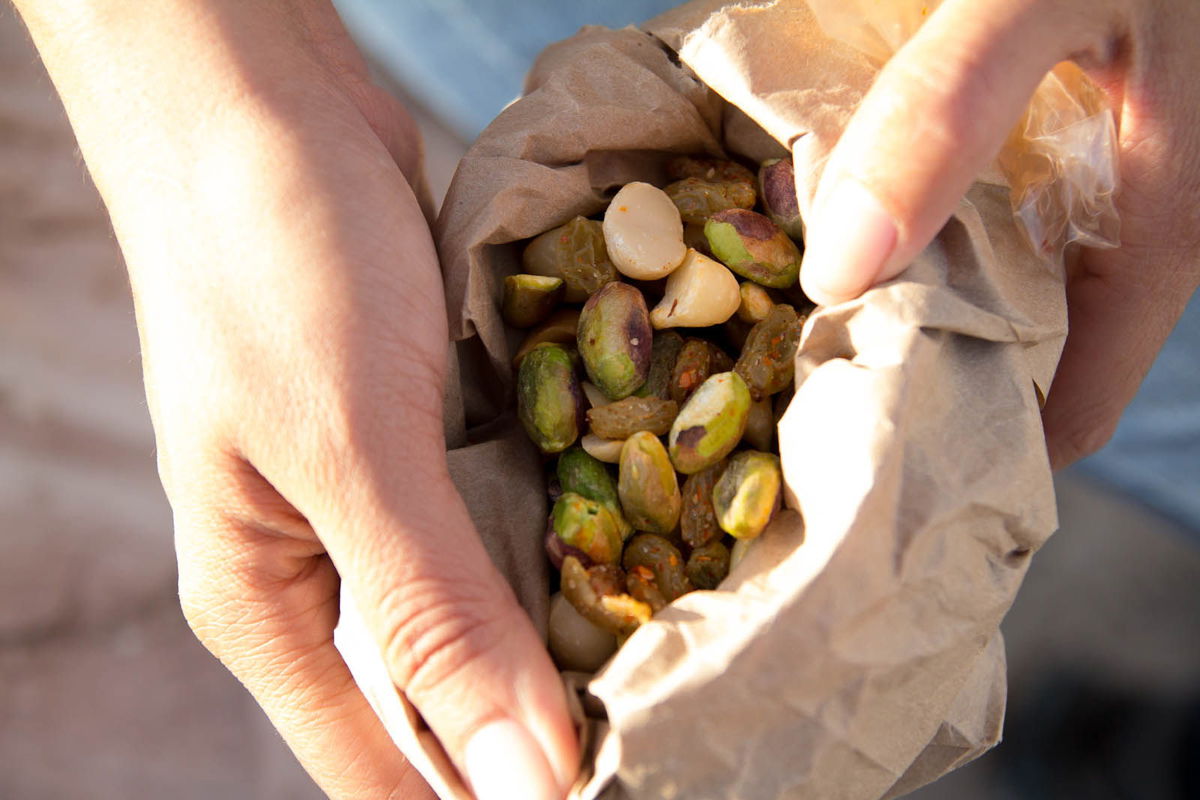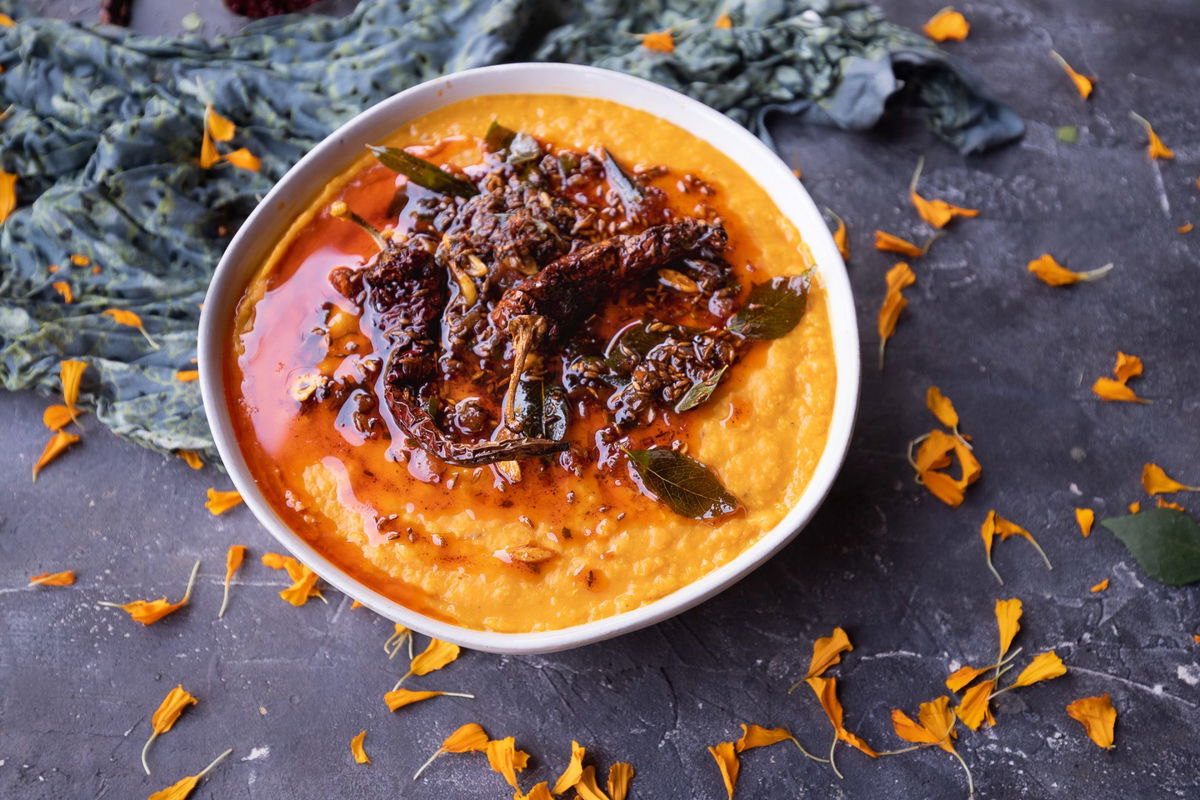There was a lone white cloud in the sky ahead of us. We watched it struggle against the heat of the sun, as it transformed from one shape to another. “A bird,” “An elephant,” “A frisbee,” Puja and I called out the shapes we saw as we watched it change. Each transformation threatened to obliterate the cloud. Death by evaporation. But somehow that little cluster of water particles stayed together, unwilling to give in.
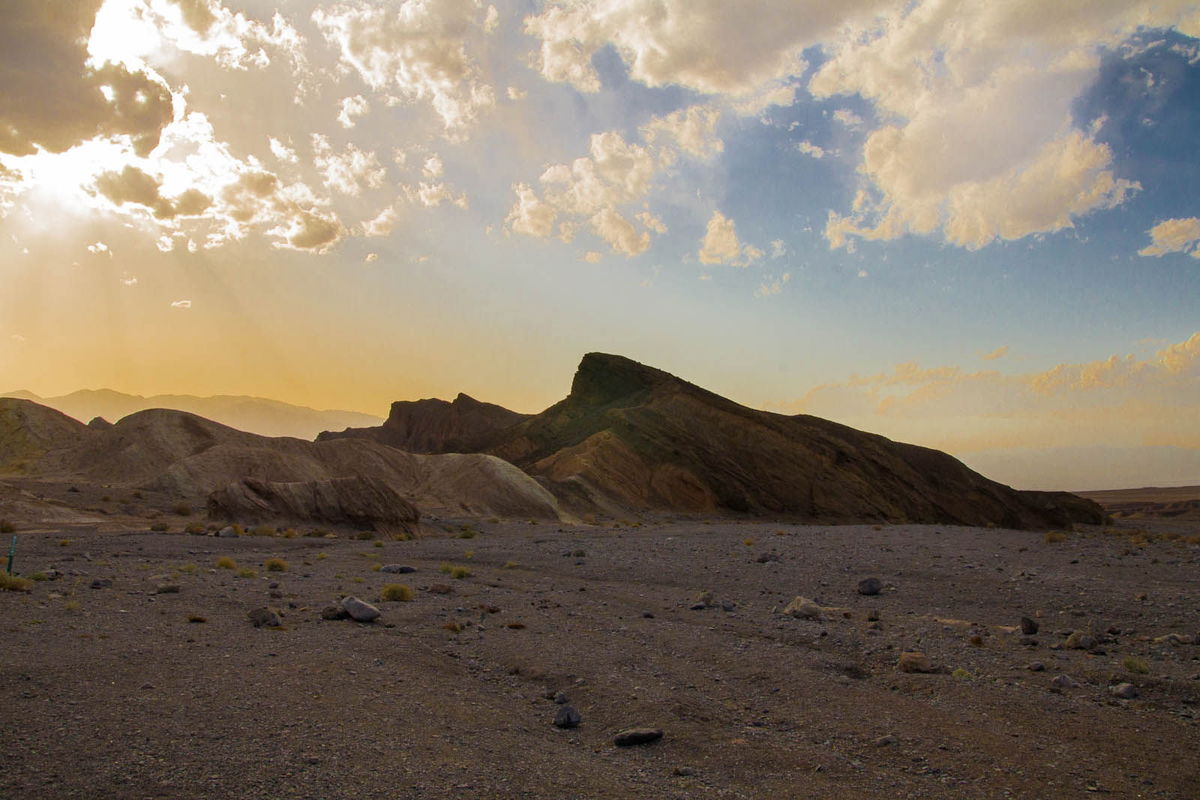
The desert is a vast and open landscape. An expanse of speckled yellow dirt under a deep blue sky. The drive into the park was mostly empty. We would come across another vehicle every twenty minutes or often more, and either pass it, or be passed. There is no turnstile or gate into the park. For a long time we wondered if we were officially in the park or not. Eventually we passed a sign confirming we were, but no rangers in sight.
We pulled over along the open field to examine the blooming purple and orange desert flowers. I walked twenty feet into the field to get a picture of the landscape from a good location. There was a small shuffling by my feet. I had startled some unsuspecting lizard. He didn’t run far, just to the next shady bush. He stood there, staring at me as I watched him. The shadows of the bush made deep black blotches on him, and he was the same dusty brown color as the desert floor. A fine example of camouflage, and a reminder that I need to be careful where I step. I hadn’t seen him before he moved, and I likely wouldn’t have seen a rattler had he been one instead.
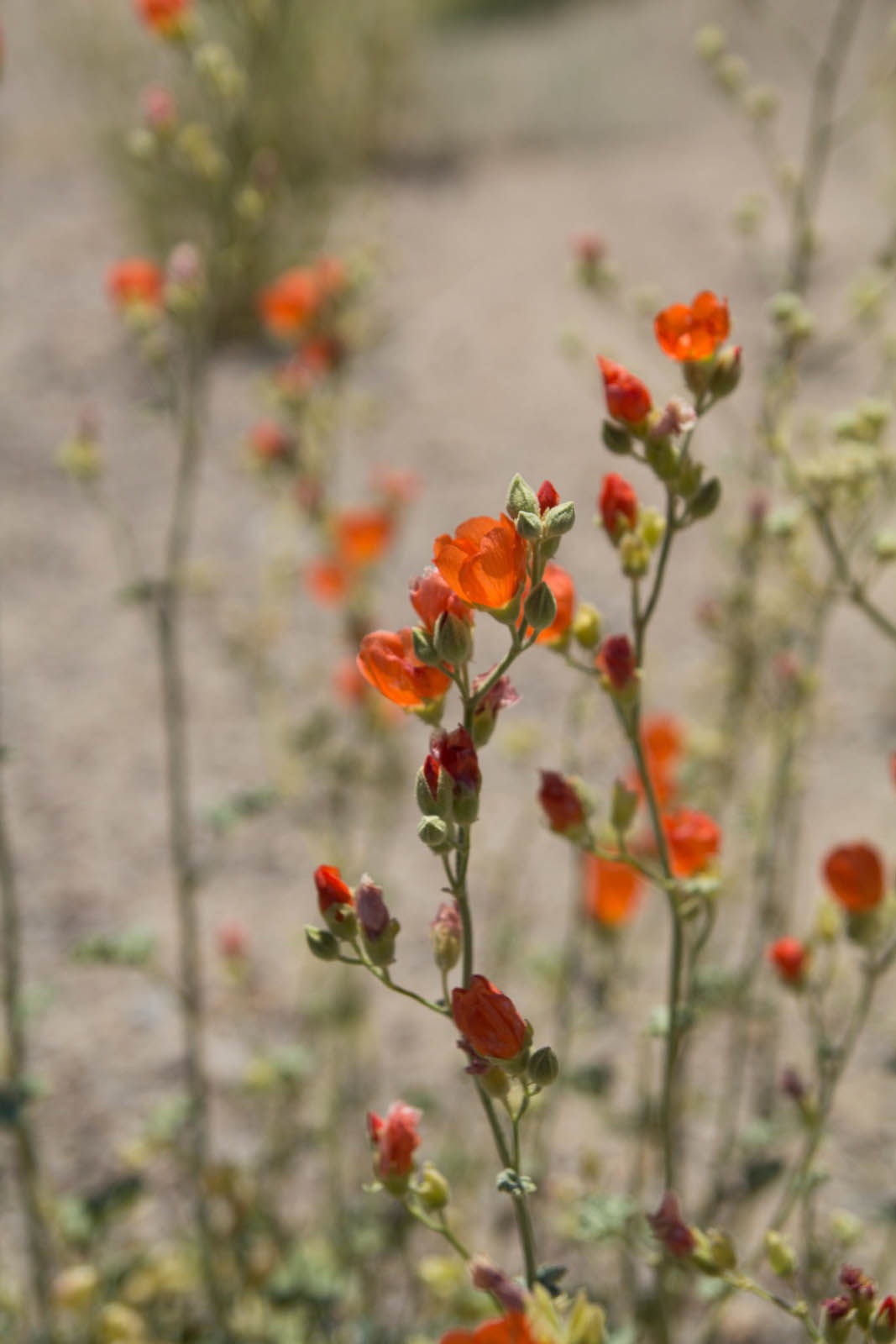
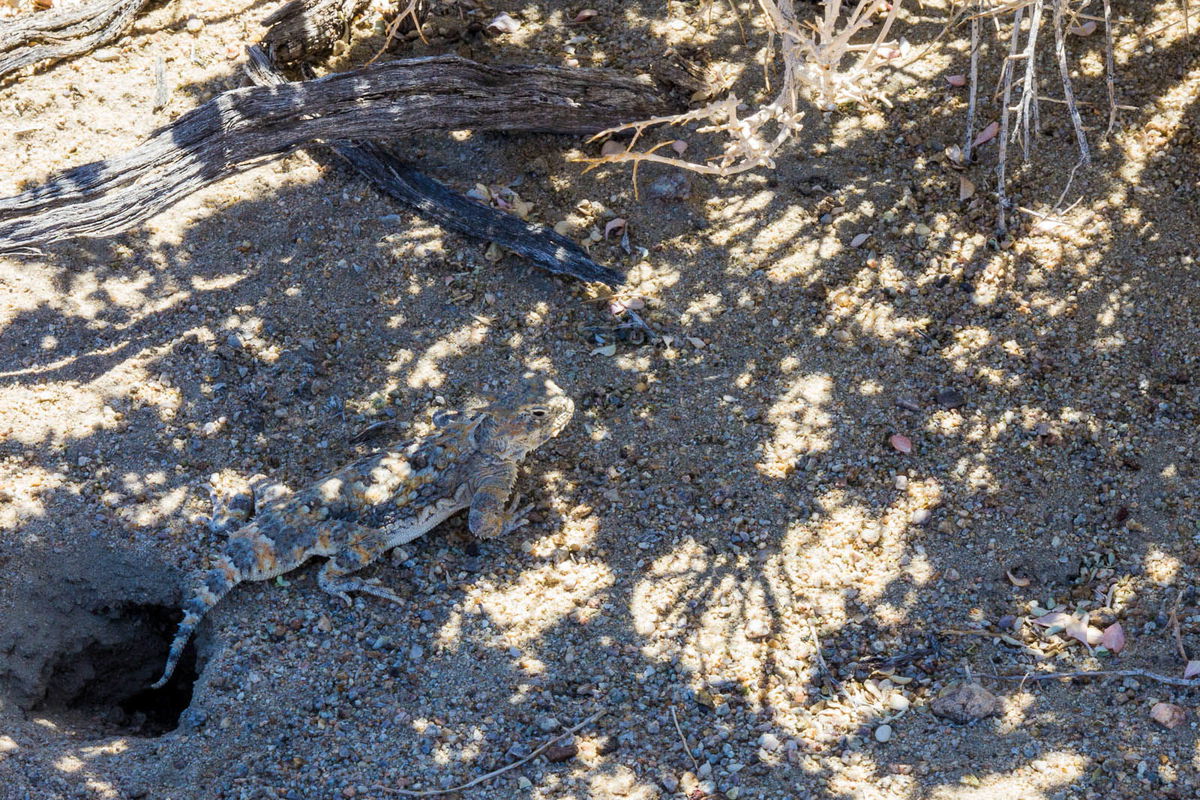
The deepest part of Death Valley, Badwater Basin, is not far from Mt. Whitney. A mere 87 miles to a bird. But a car must travel through two mountain ranges and many winding roads. Mostly empty roads, I might add. The indirectness of it makes the total driving distance from our campsite to Badwater Basin 123 miles. We made a number of stops along the way, Padre Crowley Point, random stops along the roadside, the official entrance to the park, Mesquite Flat Sand Dunes and the Furnace Creek Visitor’s Center.
We were fortunate in that the weather was extremely moderate for this time of year. The off-season had just begun, and temperatures in May have been recorded as high as 120 degrees. Must-see sites like the Mesquite Flat Sand Dunes and the Badwater Basin are reflective and they absorb and radiate heat so that surface temperatures get amplified even beyond that. One section of road has signs that warn you to turn off your car’s air conditioning in order to avoid overheating. I really came to appreciate our 2008 Nissan Versa with it’s 156,000 well-earned miles this weekend when nothing went wrong. Today the temperature was only 100 degrees at most. High but definitely tolerable.
By lunchtime Puja and I were spent. That’s when we reached the Furnace Creek Visitor Center and cooled off a little in the air conditioning. We also sought lunch next door at the Furnace Creek cafe, the saloon and the market, all were not good options for us. Nearly everything they have is beef products, which Puja won’t eat, and did not appeal to me in that moment either.
We ended up eating out of our cooler, some snap peas and some cheese and bread, while staring at the Furnace Creek Golf Course. That’s right, at one of the hottest and driest places on Earth, there is a golf course. While I do appreciate the irony of the place, it was truly infuriating sitting there watching the water pour out of the sprinklers (which appear to run twenty four hours a day), during a terrible statewide drought, onto a green golf course in the middle of the hottest place in the world, with no golfers in sight. At 2 PM, the water practically evaporates before it hits the grass.
If you go to the company’s website they describe their efforts in sustainability, how in the winter they paint the grass to make it green. They have done things to limit light pollution and to make their land amicable to birds. But there is no mention as to why their golf course is justifiable in terms of water use. I wonder why. This place just seems to be a relic from the past, when preservation was about exploitation, a time when these sorts of excesses might have been viewed positively as expressions of grandeur, not as what they really are: vain and banal.
Lunch, and plenty of water to accompany it, helped Puja and I finally recover from the heat related malaise we had been experiencing and we moved on to Badwater Basin. We almost stopped at the “Devil’s Golf Course” along the way, but I didn’t want to challenge the Versa to that particular road. It looked rough and our only spare tire is a donut. It should be said, the Devil’s Golf Course is not a golf course at all (Death Valley only needs one), but is just a fun name for this wide open jagged field of dry salt (halide crystals). The Borax company that once mined out of Death Valley bored exploratory holes around there that proved the salt was at least 1,000 feet deep. More recent surveying techniques put it at about 9,000 feet! When Puja reads this, she will be comforted to learn this little piece of evidence that the Earth will never run out of salt.
Badwater Basin is a more accessible section of the salt flat and is considered to be the deepest part of the park, although the true deepest part of the park is a few miles out from there, where nobody goes because it is too dangerous– thin salt crystals sit over thick mud. There lies a point 282 feet below sea level. A lot of people at the basin were staging planned photoshoots, using colorful flags or scarfs. The white of the salt flats makes for some dramatic, high key photography.

From there we headed back from whence we came, detouring for “Artist’s Drive”, a twisty scenic drive along various rolling hills and jutting rocks of various colors. Puja was most impressed by the green rocks. We speculated about their green color, thinking maybe it came from oxidized copper. But in our research later we identified it to be most likely mica.
Artist’s Drive is another popular drive, we followed a number of cars into this one-way drive of canyons, but many people stopped at the first big lookout point, climbed up some rocks and we never saw them again. Over the next small stretch of our drive, we saw a couple of other cars. We decided to get out at one particular spot that had an interesting canyon and some large green rocks. We stopped behind a white car that was leaving as we pulled up. We walked over the desert floor, over a couple of rolling mounds of dirt to get the best view of these rocks. I was hoping to spot some sort of wildlife along the way, whether it be a lizard, a snake or if really lucky, a kit fox, but saw none. The wind picked up when we got to the little canyon. After we snapped a few pictures we returned to our car and for the rest of the scenic drive saw no one.

This stretch of the drive reminded me of old roadrunner cartoons with the high, curvy sandstone walls on either side of us. Millions of years of erosion has carved abstract statues and archways along the dugout canyon we were driving through. We stopped whenever we felt like it– if we spotted a plant we liked or a nice view of some hills. Stepping out of the car was sometimes difficult with the wind rushing around us, it could really yank the car door open if we let it. And it did a couple of times.
When that drive ended, it wasn’t long until we got to our last destination within the park, Zabriskie Point, which overlooks striking white, rolling hills called “Badlands.” The badlands are empty mounds of sedimentary rock where almost nothing grows. It was here we decided to do a quick photo shoot for Puja’s Spicy Trail Mix. After checking out the view from above, where all of the tourists gather, we went down below, within the hills.
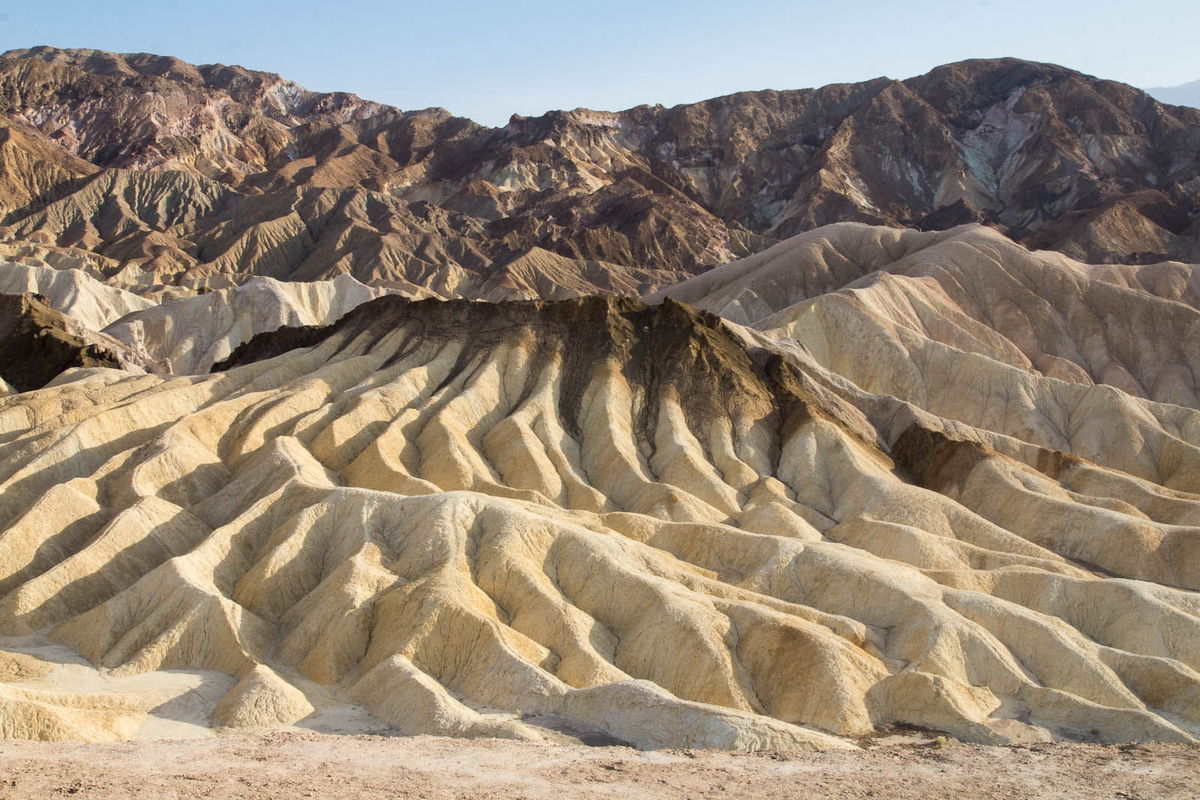
Death Valley is a weird place to hike around because there is very little that represents trails. In more typical hiking locations, trails are clearings of dirt between grasses or brush of some kind, or cleared trees. But the desert is little more than dirt. There are plants everywhere, but they are spread out evenly with gaps in between them, they are low and do not interfere with your ability to travel. In a classical sense, there are very few trails in Death Valley. Everything is a trail.
It was dead silent within the rocks, only the occasional burst of wind above us might break the silence. At one moment I leaned against a rock, and pulled Puja toward me. “Be quiet,” I told her. “Do you hear that? There is no sound.”
There were many people a couple of hundred feet above us, up at Zabriskie Point, we could see them from certain angles, but whatever noises they were making were not reaching us. There is great beauty in the sound of stillness, as rewarding as any landscape.
Puja had been hesitant to lean against the rock with me. There were many little holes where surely some critter must live. Would a spider crawl out and come toward us? Or are some of these holes an entryway to the house of some mouse or snake?
After our little stop at Zabriskie Point, we saw many repeating sights. The Badlands went on for a couple of miles, then faded into some other formation and then another. Some were rockier with sharp or steep faces, others rolled like the badlands. Striation on the rocks could be flat, or curved or angled, where the movement of the Earth had bent, stretched or pushed them from the ground. There were many colors to the rock and dirt, from brown to bright red and to green. We gaped at them all. And we drove on as the sun slowly sank behind us.
The drive to the hotel was a mere thirty miles of low grade climbing, no windy hills to work through. We reached the town of “Death Valley Junction,” which is really no town at all, a right turn and a few hundred feet and we were at our destination.
The hotel is a big horseshoe shape and made of adobe. It was built in the 1930s. One of the arms of the building contains the “Opera House,” the other has the cafe and the railroad museum. All of these things are run by a small number of people. When we went into the lobby, there was nobody there to check us in. We found a sign that said they were out giving a tour of the Opera house and would return shortly. So we went outside to look around.

Puja was a little nervous about this place. We still had time to bail, she hadn’t given them a credit card number so we could just leave and there would be no penalty. We hadn’t had cell phone reception all day and we weren’t getting it here either, so there was no looking up reviews. But I was game, this was exciting to me. This place clearly has some kind of history. The worst thing we could get out of it was a story.
As we stood out front, the wind started to pick up. We were here because 65 mile per hour winds were predicted, and they went from zero to sixty in the first few minutes we were there. There was no sign of the hotelier, so we went to the cafe to seek shelter and kill some time. The menu was limited, mostly beef items. Puja never eats beef and I wasn’t interested at the moment. So she ordered a slice of peach pie a la mode and I ordered onion rings and a chocolate milkshake. Our second milkshake of the day.
“When was the last time we had a milkshake?” I asked her.
“Ruby’s?” we both guessed– about three years ago.
“And now we’re having two in the same day,” she said what I was thinking.
The cafe was mostly empty. A group of three women and three girls had a table on the far end, Puja and I sat by the window at a two person table. A young woman sat on a barstool at the counter. She wasn’t eating anything and she looked especially comfortable here, I tried to work out whether she worked here or was just hanging out. An old TV set was mounted on the wall behind the counter and was showing Forest Gump, although nobody seemed to be watching it.
Our waiter came over to take our order. A young man, recently turned eighteen we would eventually find out. He was running the whole front of the restaurant. At one point the chef briefly came out from the kitchen, only to drag our waiter back with him out of sight, into the kitchen.
The wind was really blowing outside. The three girls at the long table walked outside, struggled with the door. The lights dimmed every few minutes, brownouts from the wind. A scraping noise came from out window. They came back with sweatshirts and jackets on.
“Is that the wind?” the girl at the counter asked.
“Yes,” I said, “sand hitting the window.” Having already decided she was a local, I took this to mean this weather was unusual here. That surprised me. I went outside to go see what it was like.
A dust cloud had enveloped everything I could see. Visibility was about 100 feet. In a city there would be much for this wind to damage, but here there was little at risk. I went back into the restaurant and the girl from the counter was now at our table talking to Puja. She filled out the pieces of the puzzle I had been working on. Our waiter was her boyfriend, she was waiting for him to get off of work.
She recommended we visit Ash Meadows National Wildlife Refuge, not far from here, to see the longhorn sheep. That is, if the wind dies down tomorrow. It did not. There were more brownouts and Forest Gump went away. It was replaced by a blue screen that said “searching for satellite signal” and a progress bar that kept just about making it before having its efforts frustrated by the wind and starting over again. Puja noticed a painting next to our table. It was of the Amargosa Hotel, wind was blowing papers around that created an arc that was completed gracefully by the form of a dancer in motion in the courtyard.
After dinner, Puja and I were finally able to check in to our hotel room. They even had wifi available, in the lobby of the hotel. We were too tired to do anything with it during the night.
The clerk showed us our room. He explained it was a hostel for borax miners built in the 1930s. The Opera House was a theater built to entertain them. An artist named Marta Becket took over the theatre, named it “Amargosa Opera House” and staged dance theater there. Puja recognized the name Becket from the artist signature on the painting in the cafe.
The room was your basic hotel room, the bed taking up 80% of the space. It had a ¾ bath. So just a shower, but that would be enough for us. We were covered in dirt, having been camping the night before, sweating during the day, and getting dirt and sand blown on us throughout the day. The shower was a welcome relief. A shower. A beer. And sleep.
Jump to Puja’s Spicy Trail Mix

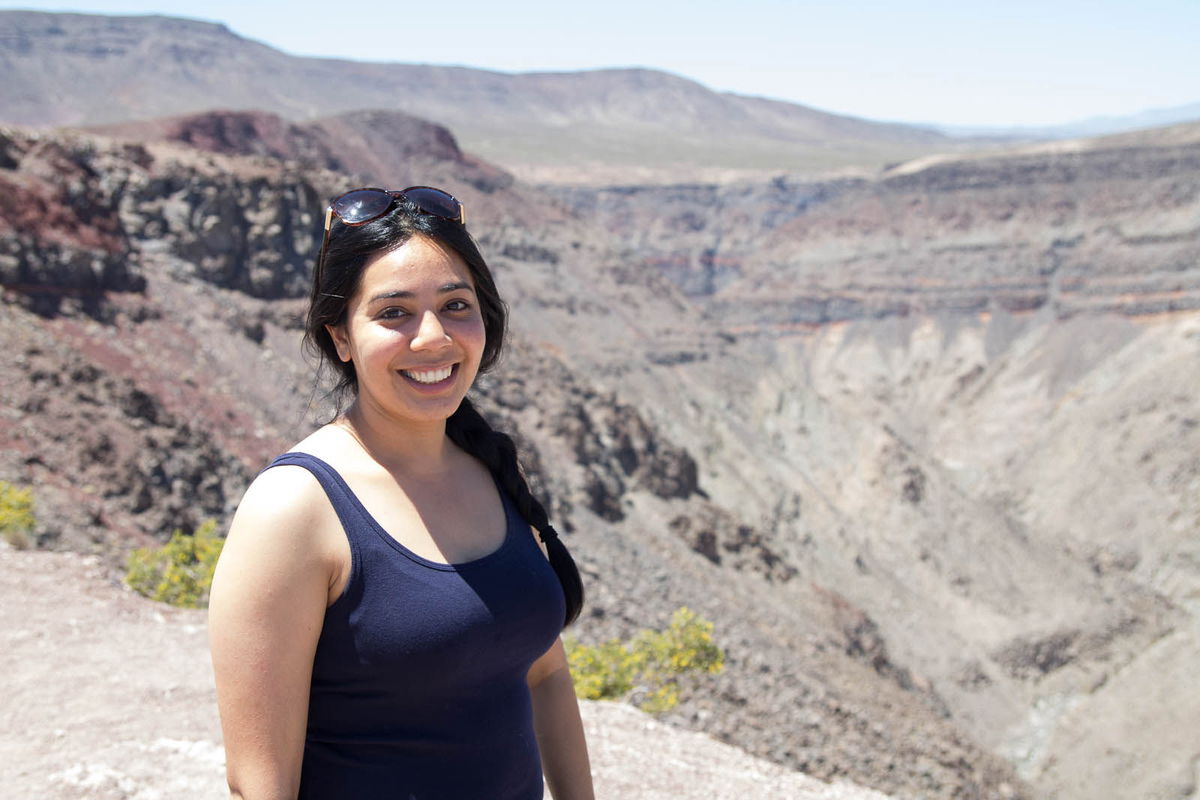

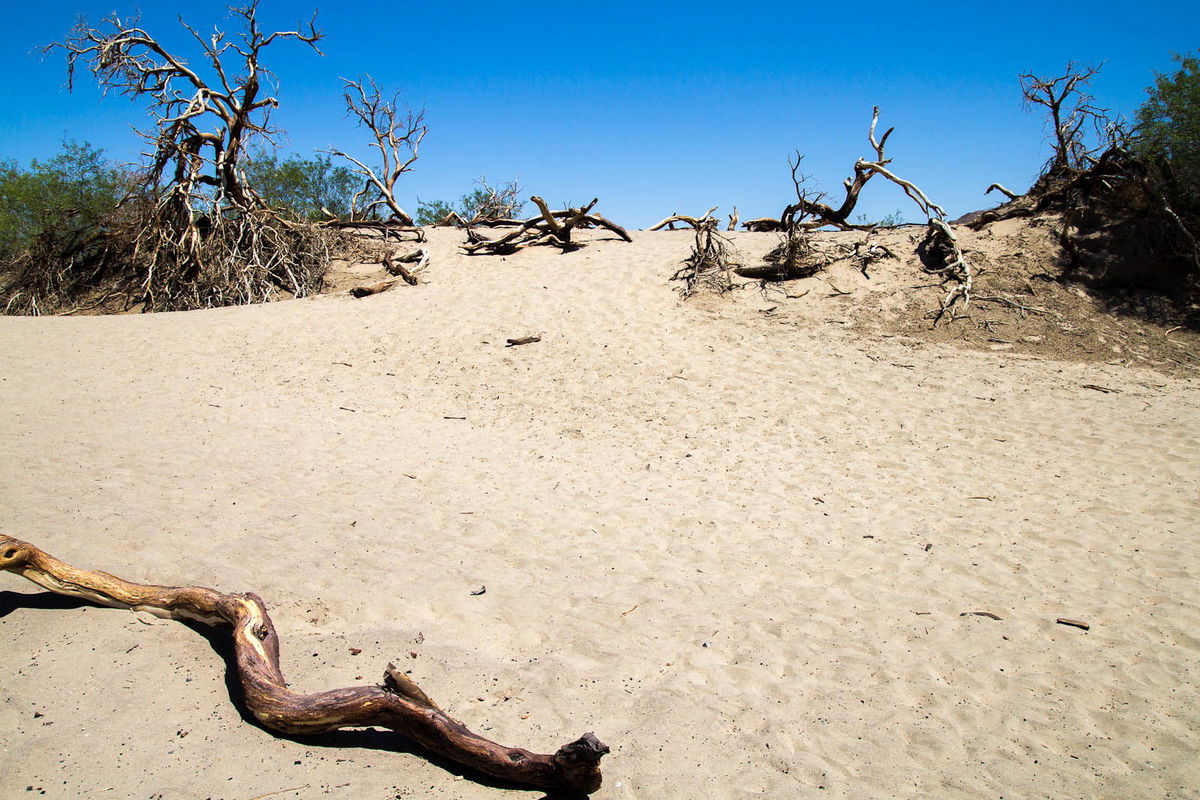





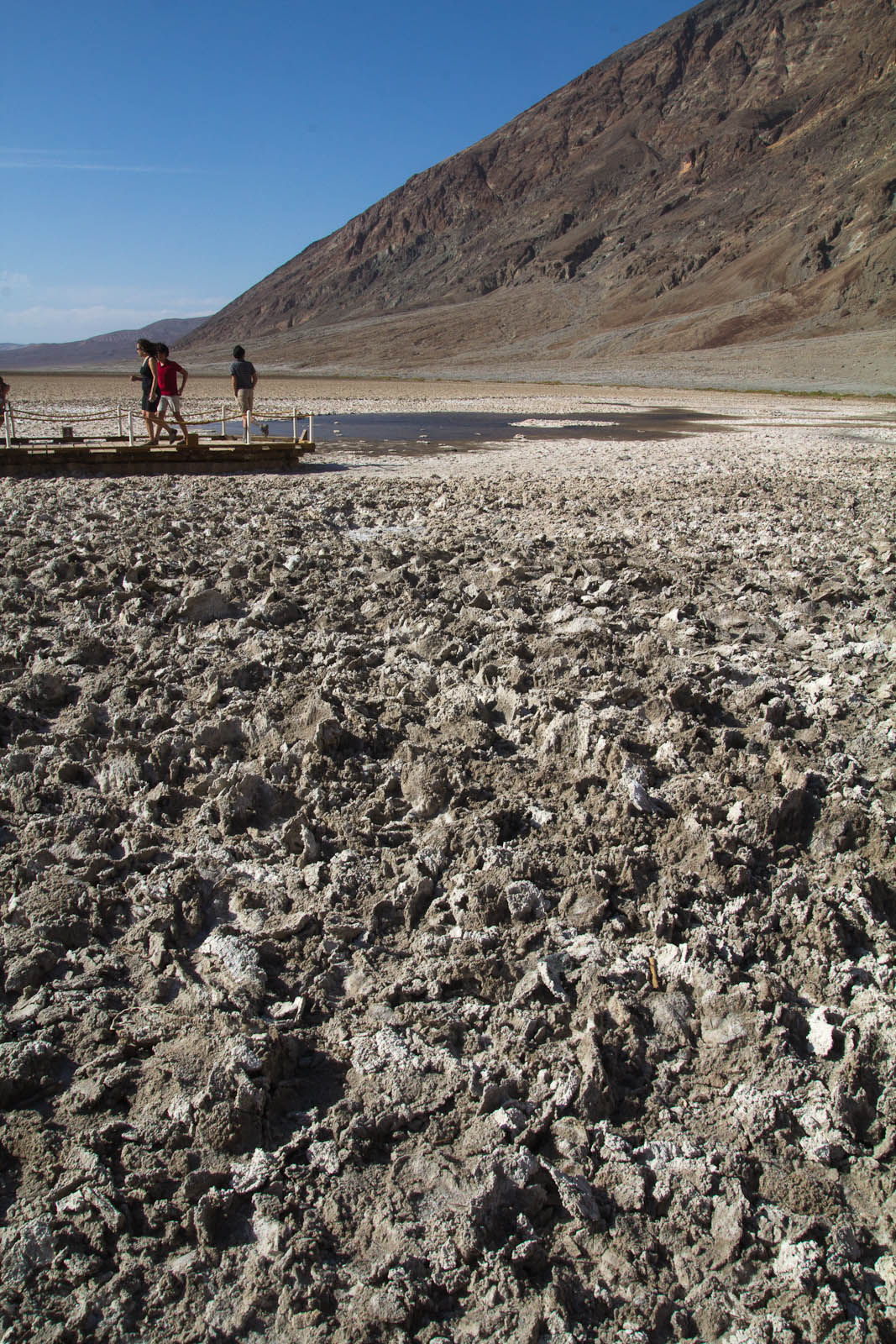
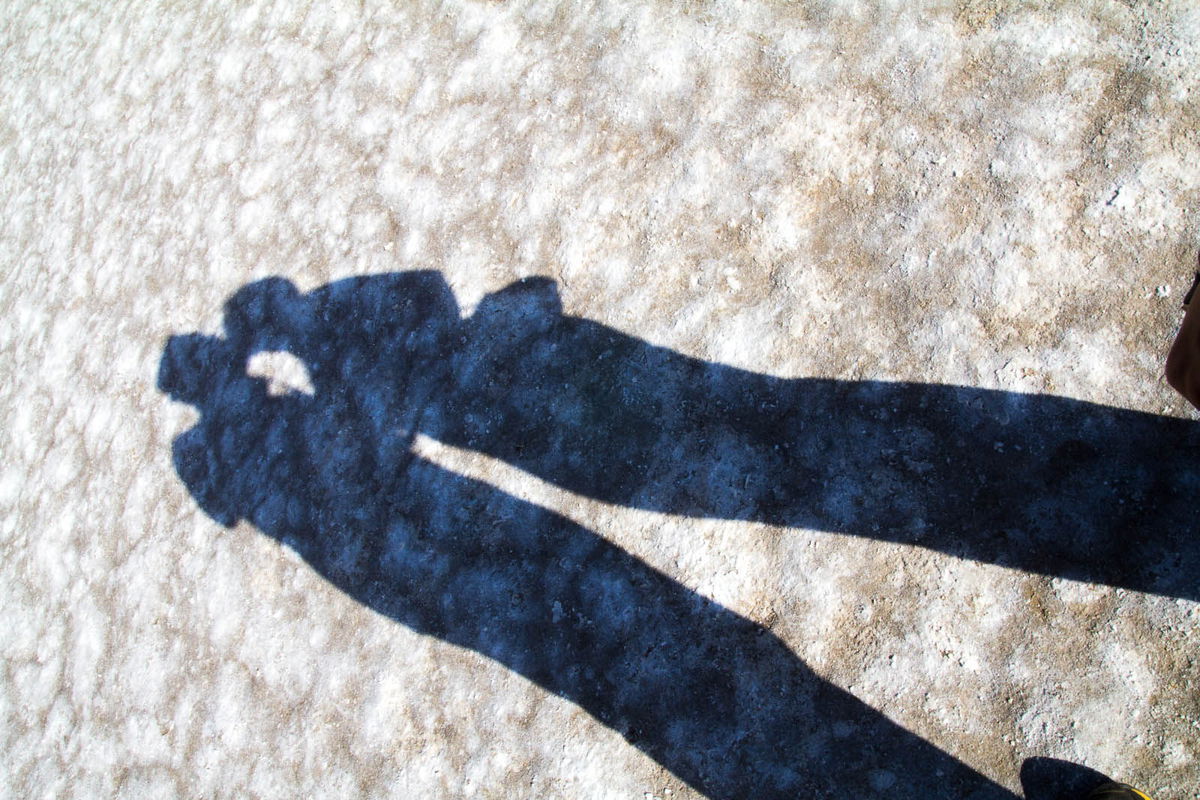
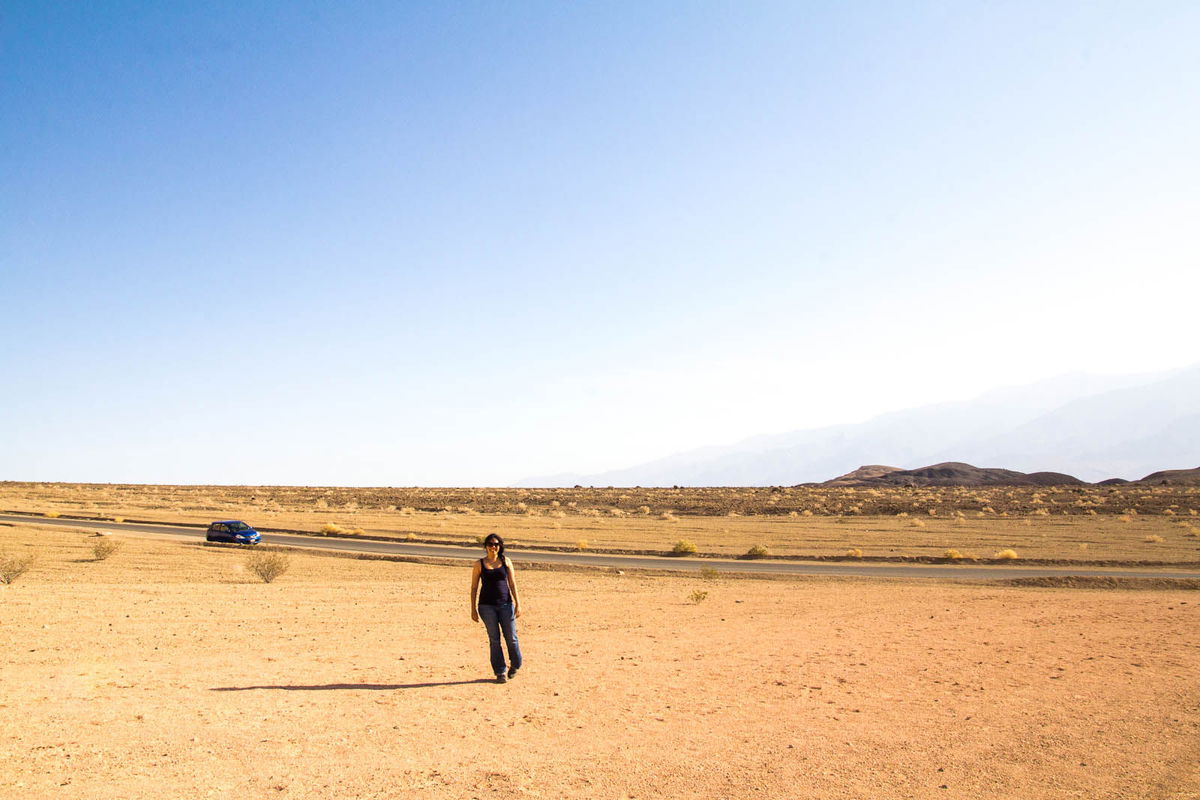


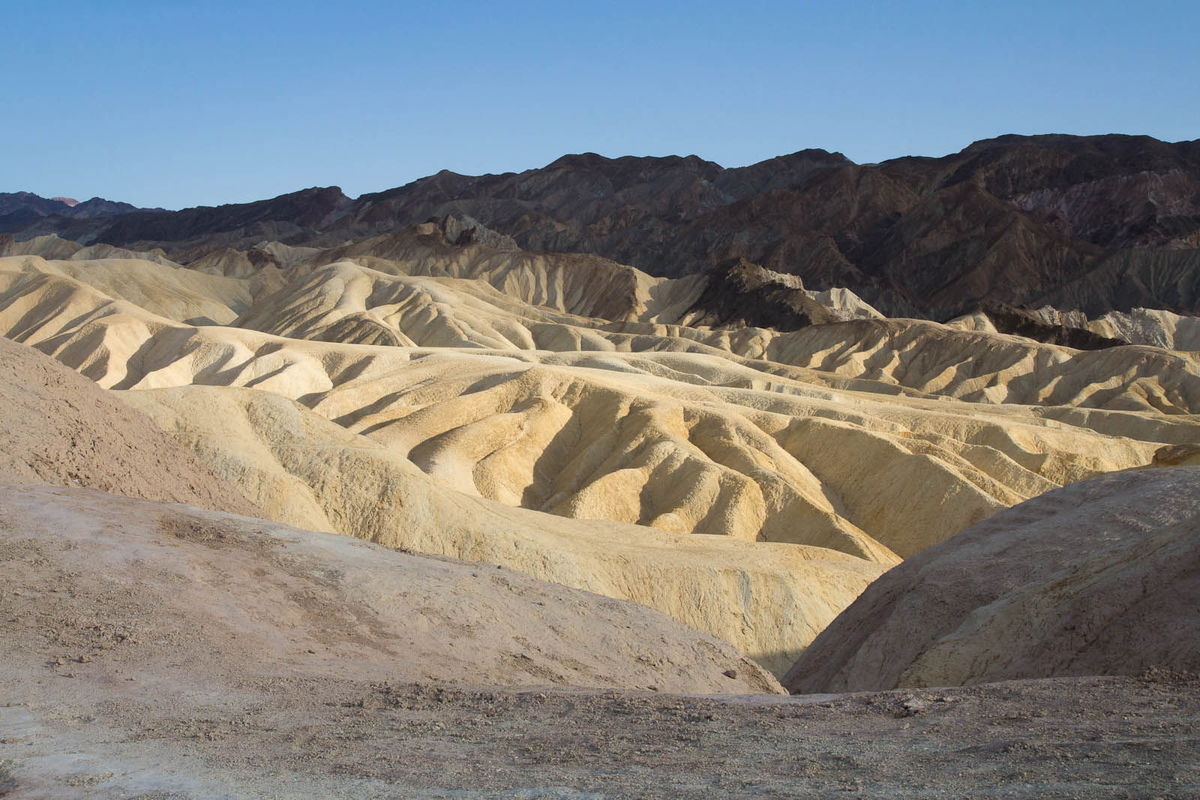

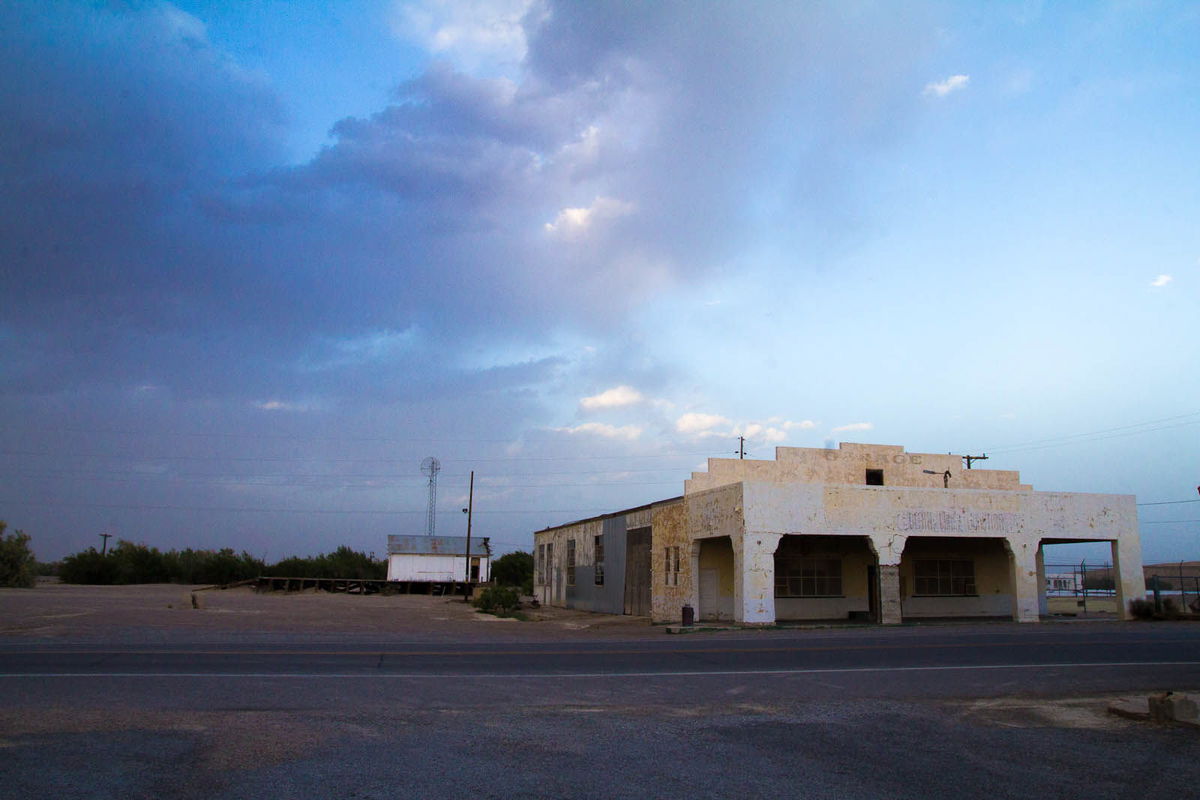

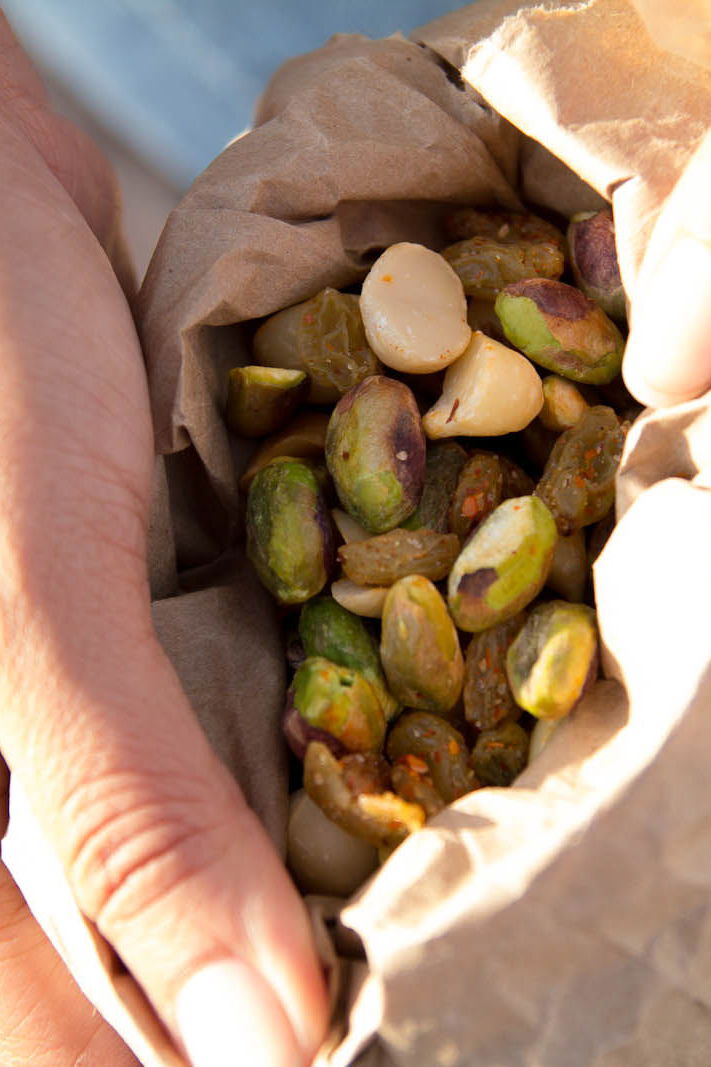
Ingredients
- 1/2 cup pistachios (shelled)
- 1/4 cup macadamia nuts
- 1/2 cup golden raisins
- 3/4 tsp chili powder
- 1/4 tsp salt
Instructions
- Combine the pistachios, macadamia nuts and raisins.
- Sprinkle with chili powder and salt.
- Mix well.
